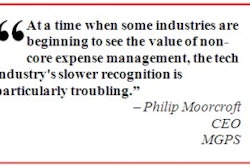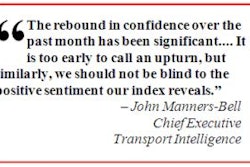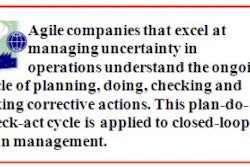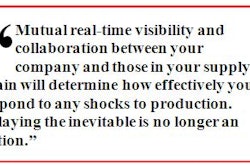Boston, MA — May 21, 2009 — In the face of today's unprecedented credit crunch and volatile economic environment, companies must do everything they can to free up working capital. Optiant, a provider of inventory optimization solutions, finds that many leading-edge organizations can look within their supply chain operations to find working capital, even if lean initiatives have been put in place.
"If management mandates lowering operating costs, running leaner, streamlining operations, reducing workforces and canceling projects, companies can still find cash within their supply chain operations," commented Fred Lizza, CEO of Optiant, Inc.
According to a report by Deloitte Consulting, "Breathing Room," companies can squeeze working capital from their supply chain. Their recommendations include focusing on inventory reduction, cash-to-cash conversion cycles and supply chain risk.
- Focus on the cash-to-cash conversion cycle.
- Consider alternate supply chain financing options.
- Ensure you have a robust framework for managing supply chain risk.
- Focus on inventory reduction.
- Extend payables, intelligently.
- Manage and expedite receivables.
- Audit payables and receivables transactions.
- Eliminate fixed costs.
- Think beyond your four walls.
- Think like a chief financial officer.
For many companies, inventory levels are driven more by customer service requirements and operational capabilities than by financial constraints. However, in today's credit crunch, supply chain managers may be faced with the reverse scenario, where working capital is the primary constraint on inventory. Management's answer may be to reduce inventory for finished goods and raw materials, but these cuts may have an adverse effect on customer service, according to Optiant.
"The best solution is to take a holistic approach rather than brute-force inventory reduction," said Lizza. "Strategically adjust safety stock policies, rationalize [stock-keeping units (SKUs)], revisit your sourcing plan, quantify your supply and demand uncertainty, and consider postponement strategies. All of these moves can reduce lead times, lower costs and improve your competitiveness in the long term. These position your company for growth as the economic climate improves."
Optiant is a provider of supply chain network design, inventory optimization and supply chain business intelligence solutions. Optiant has been chosen as the solution provider for several leading manufacturers, including Procter & Gamble, Kraft, HP, IKEA, Intel, Microsoft and Boston Scientific.



















